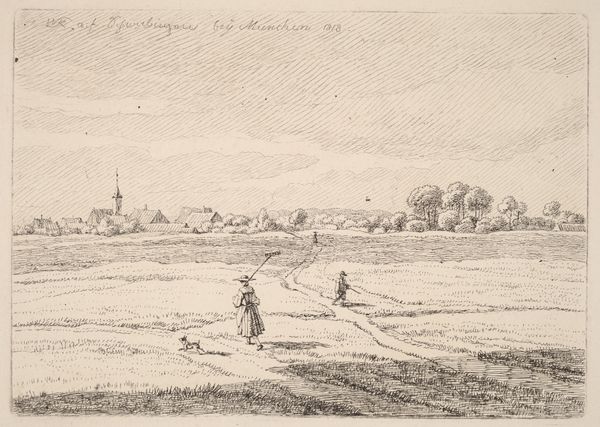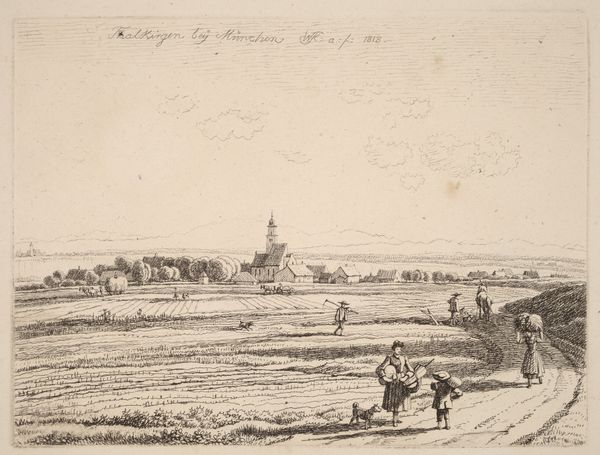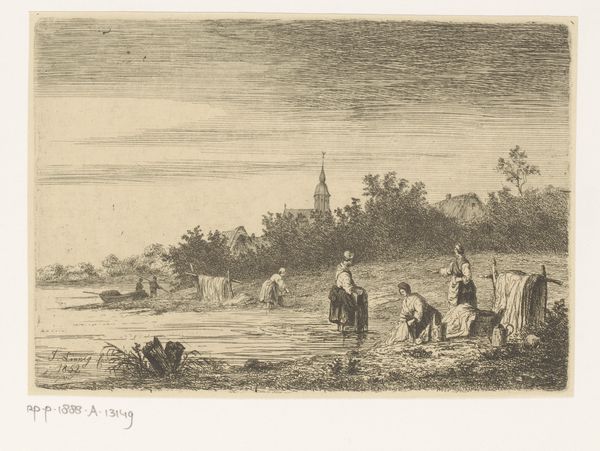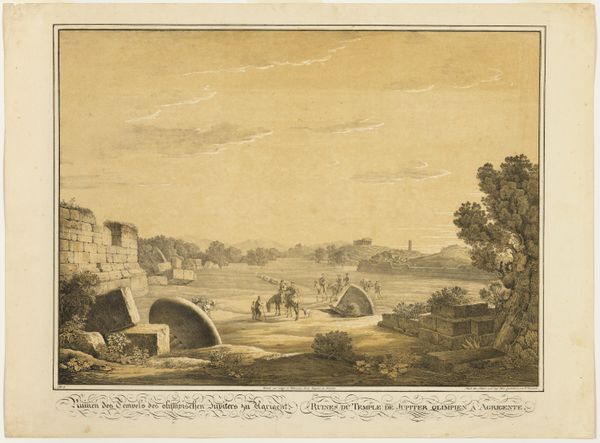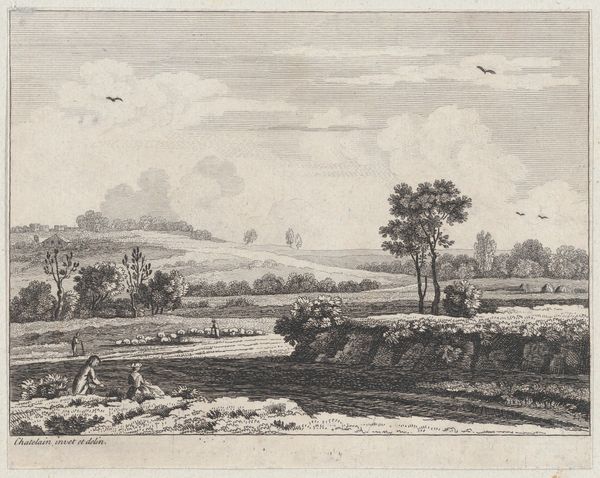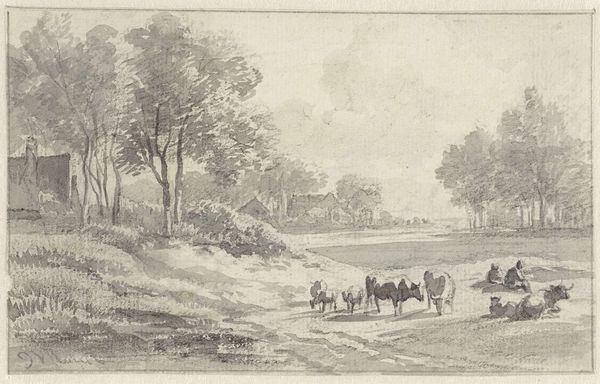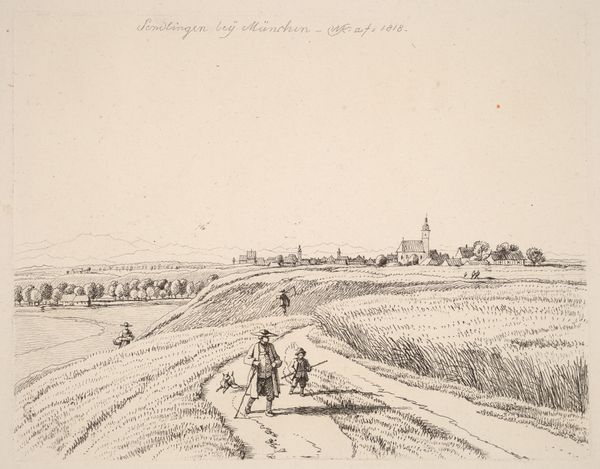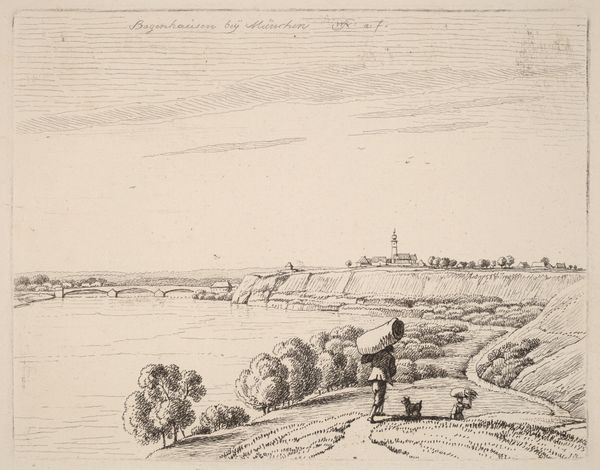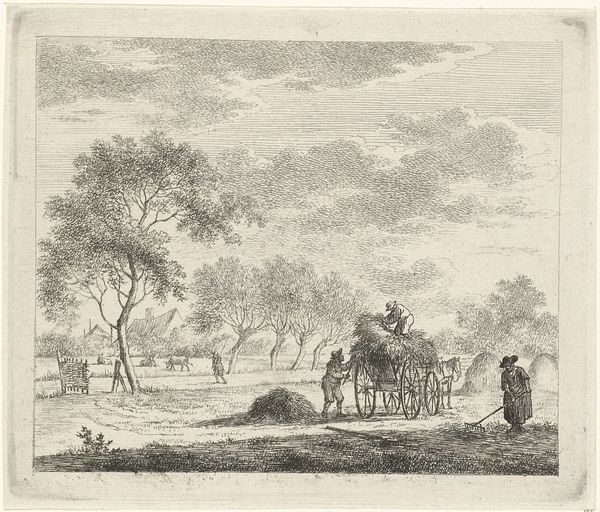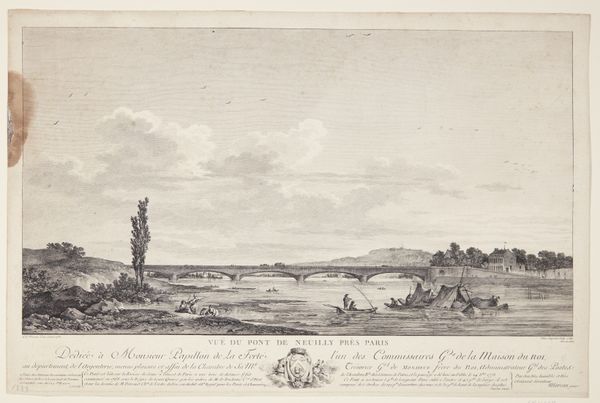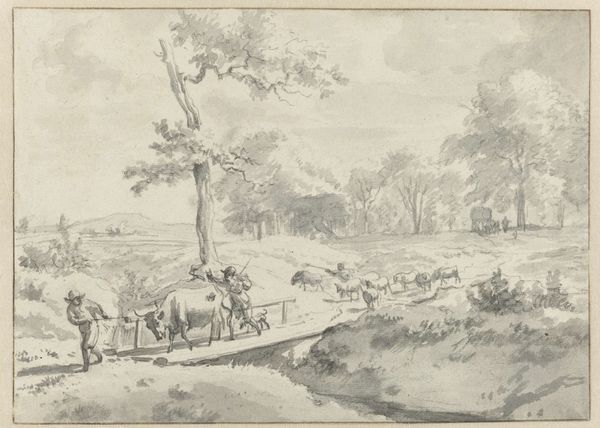
drawing, print, etching
#
drawing
# print
#
etching
#
landscape
#
romanticism
Dimensions: plate: 12 × 16.7 cm (4 3/4 × 6 9/16 in.) sheet: 20.4 × 29.9 cm (8 1/16 × 11 3/4 in.)
Copyright: National Gallery of Art: CC0 1.0
Curator: I find the openness of this composition quite striking. It has a very calm mood to me. Editor: Indeed. What we're looking at here is Wilhelm von Kobell's "Nymphenburg," an etching dating back to 1818. Von Kobell was known for his landscape art, and this piece exemplifies his mastery of the style. Curator: The almost obsessive details on the foreground grass create an impressive depth that guide us towards Nymphenburg Palace on the horizon. Yet the figures on the road and the distant palace both seem small. What can you tell us about the historical and social context that inspired its Romantic vision? Editor: Von Kobell's rendition echoes the romantic appreciation for the beauty and sublime elements in natural scenery and rural life. During the period of German Romanticism there was growing appeal towards locating self and nature in the same sphere of awareness, and also reflecting on historical legacies. "Nymphenburg" can be understood as the visualization of humans dwarfed against greater natural powers, echoing similar notions such as the “wandering” subject who gains meaning from moving through open lands, not settling on or “conquering” it. Curator: I agree that we see the symbolic diminishment of the self against the grand backdrop. We can also recognize some continuity in these long-standing notions in how our society reveres nature to find meaning and psychological balance. This could certainly invite us to contemplate our place and history alongside the natural world, yes? Editor: That's precisely what I get from it! These scenes reflect shifting societal priorities. What Kobell might highlight in an etching such as this is an expression of cultural attitudes concerning nature, labor, society, the self. Even in such a "simple" pastoral view! Curator: Looking at this vast landscape and the relatively humble individuals in it gives me a unique and quiet sense of reassurance, somehow. Editor: Absolutely. It encourages critical assessment about our place in broader power structures, cultural or social as much as natural! Thanks for walking us through Kobell's artwork from a fresh point of view. Curator: My pleasure. Thank you.
Comments
No comments
Be the first to comment and join the conversation on the ultimate creative platform.
